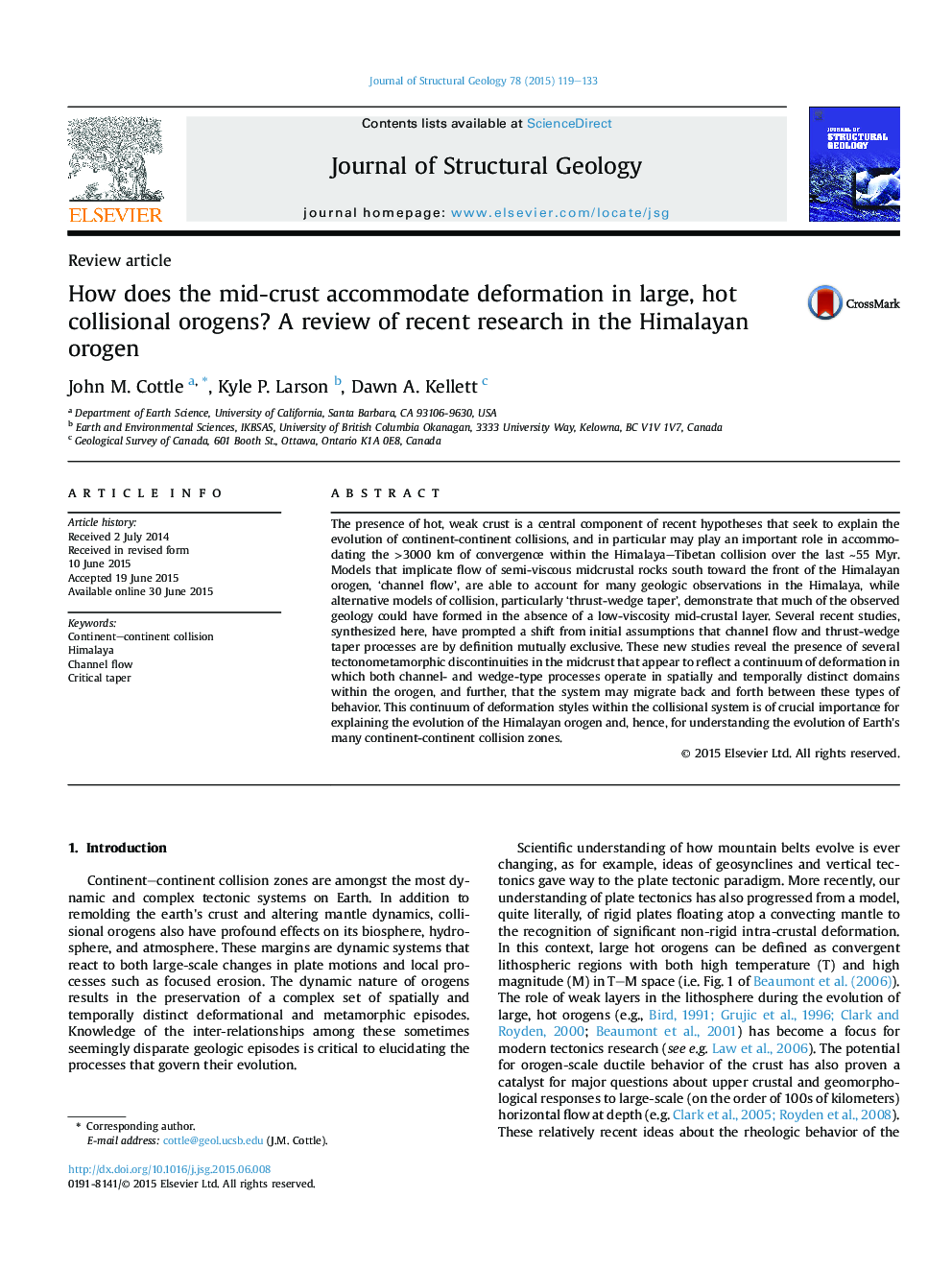| کد مقاله | کد نشریه | سال انتشار | مقاله انگلیسی | نسخه تمام متن |
|---|---|---|---|---|
| 4733013 | 1640502 | 2015 | 15 صفحه PDF | دانلود رایگان |
• In the Himalaya, channel flow and thrust-wedge taper processes are not mutually exclusive.
• Channel- and wedge-processes do operate in spatially and temporally distinct domains.
• Newly recognized tectonometamorphic discontinuities are key structural elements in this interplay.
• Tectonometamorphic discontinuities record a transition in deformation from deep hinterland-style to shallow foreland-style.
• P–T–t–D studies of tectonometamorphic discontinuities can unravel the history of strain accommodation in large, hot orogens.
The presence of hot, weak crust is a central component of recent hypotheses that seek to explain the evolution of continent-continent collisions, and in particular may play an important role in accommodating the >3000 km of convergence within the Himalaya–Tibetan collision over the last ∼55 Myr. Models that implicate flow of semi-viscous midcrustal rocks south toward the front of the Himalayan orogen, ‘channel flow’, are able to account for many geologic observations in the Himalaya, while alternative models of collision, particularly ‘thrust-wedge taper’, demonstrate that much of the observed geology could have formed in the absence of a low-viscosity mid-crustal layer. Several recent studies, synthesized here, have prompted a shift from initial assumptions that channel flow and thrust-wedge taper processes are by definition mutually exclusive. These new studies reveal the presence of several tectonometamorphic discontinuities in the midcrust that appear to reflect a continuum of deformation in which both channel- and wedge-type processes operate in spatially and temporally distinct domains within the orogen, and further, that the system may migrate back and forth between these types of behavior. This continuum of deformation styles within the collisional system is of crucial importance for explaining the evolution of the Himalayan orogen and, hence, for understanding the evolution of Earth's many continent-continent collision zones.
Figure optionsDownload high-quality image (91 K)Download as PowerPoint slide
Journal: Journal of Structural Geology - Volume 78, September 2015, Pages 119–133
